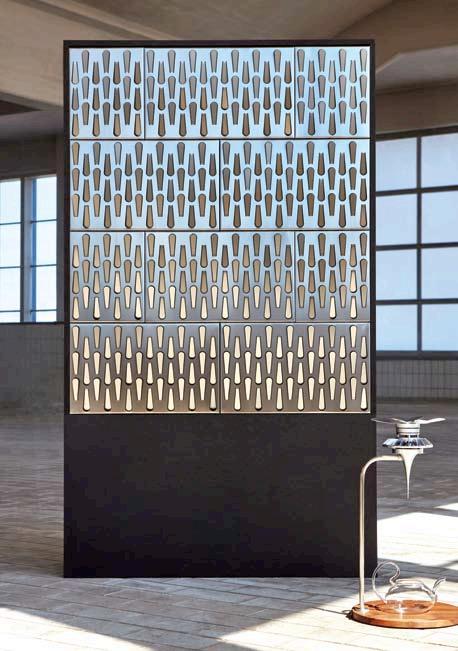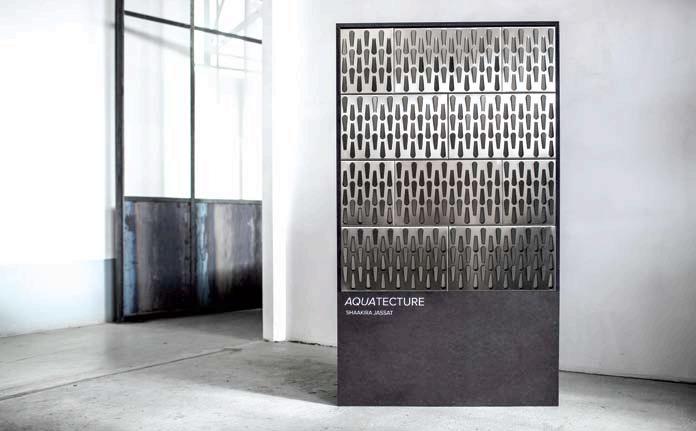
4 minute read
Aquatecture Façade Panels
IT Product
With the escalating variants in temperatures, climate change palpably poses a fundamental threat to life on earth. We find ourselves fighting with the beast of extremes, with longer dry spells, sporadic flash floods, glacier shrinkage and graver impact on the environment in general.
Advertisement
The World Health Organisation has predicted that by 2025, half of the world population would be living in water distressed areas. Africa, in particular is a continent highly vulnerable to the impact of global warming. It has become increasingly difficult for cities in these regions to provide the basic civic amenities pertaining water services. In 2018, after three consecutive years of scarce rainfall, Cape Town faced a water apocalypse, which was labelled Day Zero - the largest drought incurred municipal water failure in history.
S o u t h A f r i c a n d e s i g n e r and Founder of Studio Sway, Shaakira Jassat - in the face of the recent crisis faced by her country - swiftly responded by devising an urban water harvesting panels for buildings that can sustain their own water needs. Though water harvesting in not a new phenomenon and has been practiced since times immemorial, the existing systems are typically large, cumbersome and difficult to install in urban settings. To add to the space crunch issue in cities, the urban design format with high-rise structures and infrastructure, acts as a deterent.
Talking about the intention behind devising Aquatecture,
Aquatecture Façade Panels Studio Sway’s Aquatecture panels offer a space-efficient system for rainwater harvesting that aesthetically fits in the urban settings. BY SHWETA SALVI
Aquatecture is a building panel system which can function as an integrated water harvesting system
Shaakira explains, “The main goal was to create a water harvester that would fit in dense urban spheres through its compactness, visual identity and ability to integrate into architecture.”
T h e c o n v e n t i o n a l w a t e r collection systems, with its design, high maintenance cost and alarming
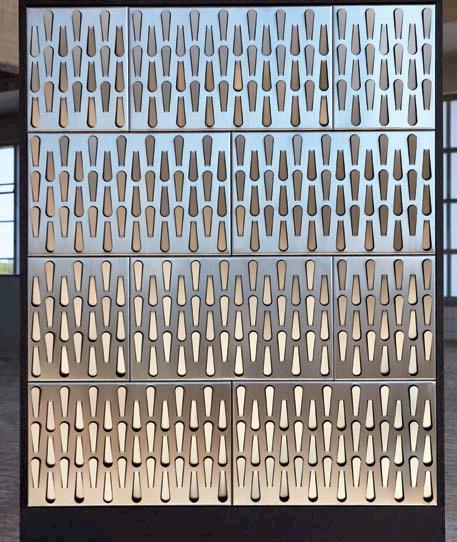
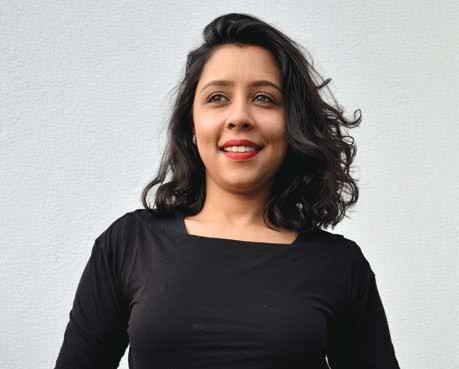
The rainwater trickles through the perforations and is collected in collection tanks before being pumped to the grey water system
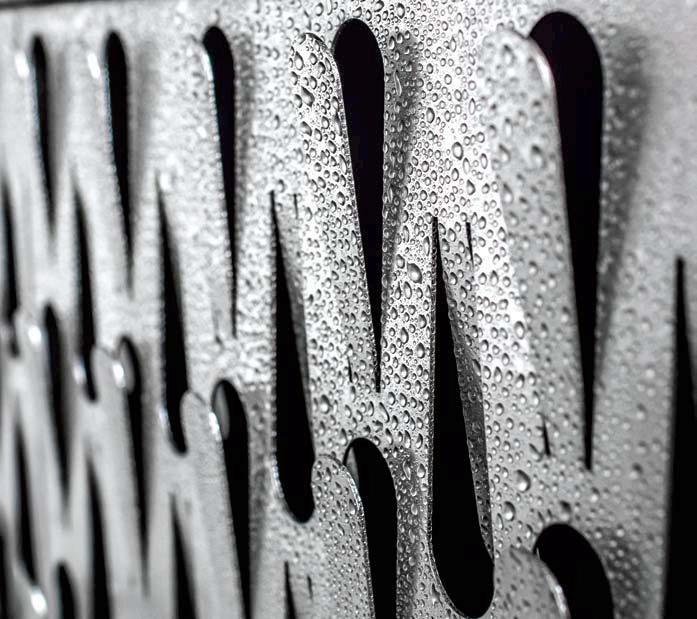
contamination markers impose some restrictions in cities, and also do not suit the urban aesthetic. Moreover, heavy downpour also leads to massive wastage of water.
Aquatecture panel doesn’t just aim for crisis management, but also addresses the serious challenge of devising a resilient and efficient water management system in metro cities. Shaakira tells us, “I realised the cities needed something that is compact and easier for people to engage with. I believe this panel will help us reconnect with our water resources in the urban environment.”
Aquatecture is a stainless steel panel system, which can be easily installed on façades of buildings and can function as an integrated water harvesting system. It is designed to collect rainwater through funnel-shaped pockets perforated on the panels. Due to its corrosion resistant qualities and its durability, stainless steel was the preferred choice of material for Aquatecture.
Shaakira went through a thorough prototyping exercise to pick the ideal pattern for the openings. Since the panels could potentially be used as stand-alone landscape installation or on the external facades of buildings, the intent was to not only optimise water collection but also to make it aesthetically appealing. After several tests on the panel with water showers mimicking the rain were carried out Shaakira finalised on rounded funnel-shaped punctures. The rainwater streams through the openings and is collected in collection tanks before being pumped to the adjoining building’s grey water system, where it gets recycled along with the used water from kitchens, washing machines and other appliances.
Apart from building façades, Aquatecture panels can be installed as urban landscape features and function as water harvesting stations in public areas across the city, catering to landscaping water needs of urban open areas.
Jassat also speaks of the potential of integrating the panels with technology to harvest moisture in the atmosphere. The water vapour panels will apply the principles of thermodynamics to condense the vapour in the air before being harvested by following the regular process.
Currently, Shaakira is working on the next phase of the project, where the team has identified a site to test Aquatecture on an existing building façade in Cape Town. “I have been working closely with my team, made up of Mark Noble, Development Director of the V&A Waterfront Cape Town and Adam Ozinsky, Building Envelope Designer from Arup, to have the test patch up by early 2020. Ideally, I would like to get Aquatecture tested in various countries where rainfall and moisture content in the air varies.”
Shaakira is on a path of extensive course correction and is exploring all avenues to harvest water for our future generations. She has been actively studying ‘air plants’ like Tillandsia and Bromeliad which fulfill their water needs from the air. She recently presented her research at Dutch Design Week through models showcasing ‘how these plants can inspire architecture to evolve and embrace water as we step into the Symbiocene era’ - an era where humankind shall learn to coexist with the nature symbiotically.
As studies indicate, the rainfall percentage will continue to oscillate and even if we implement regulatory controls the future of water looks grim. Given the circumstances, we shouldn’t wait for ‘Day Zero’ to take action - a multi-pronged effort with wider awareness and outreach programs should begin now to avert future calamities. Contact email: info@studio-sway.com web: www.studio-sway.com
